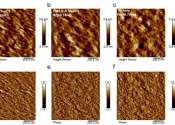Solar technology: Researchers develop innovative light-harvesting system
In order to convert sunlight into electricity or other forms of energy as efficiently as possible, the very first step is an efficient light-harvesting system. Ideally, this should be panchromatic, i.e. absorb the entire ...
Jun 26, 2024
0
38









